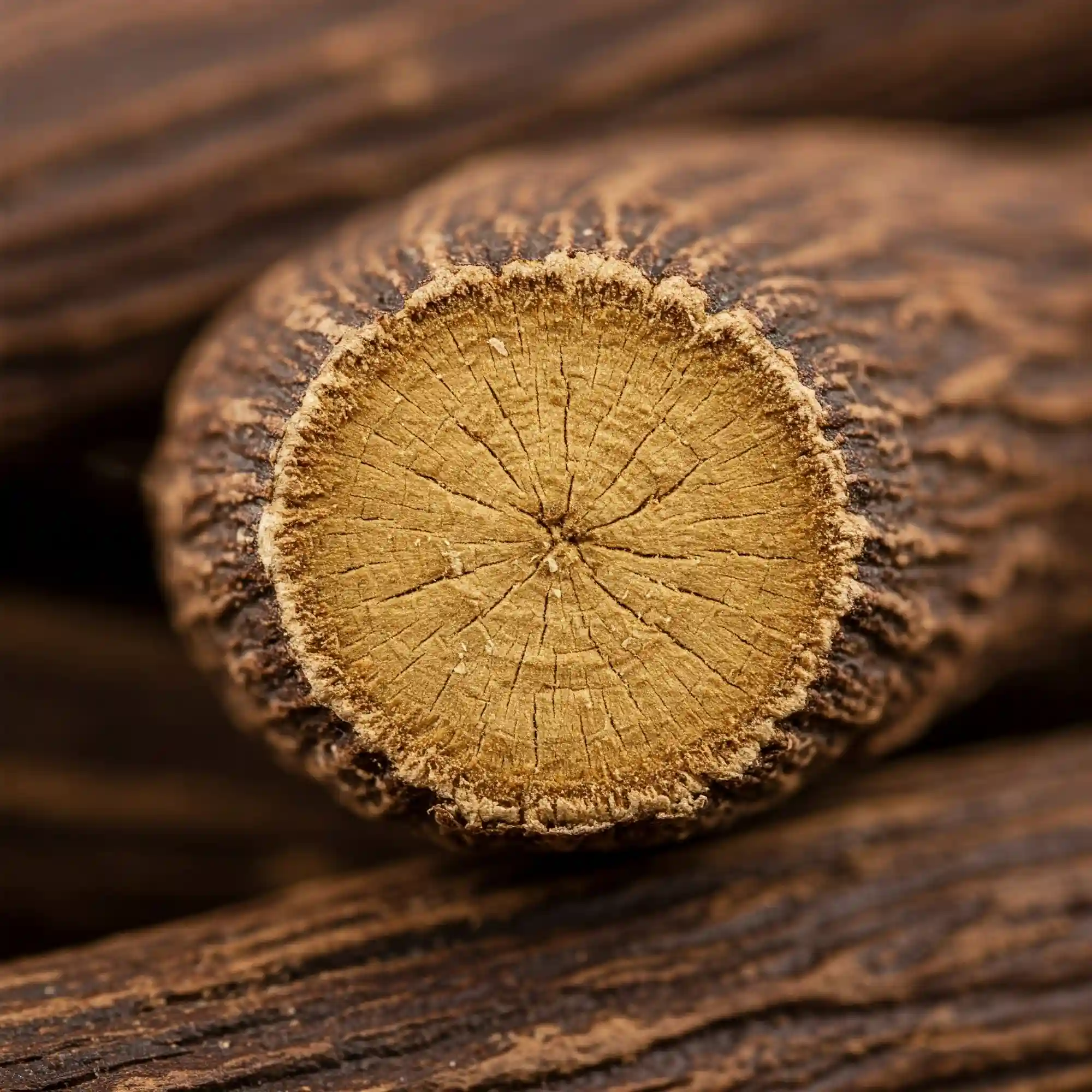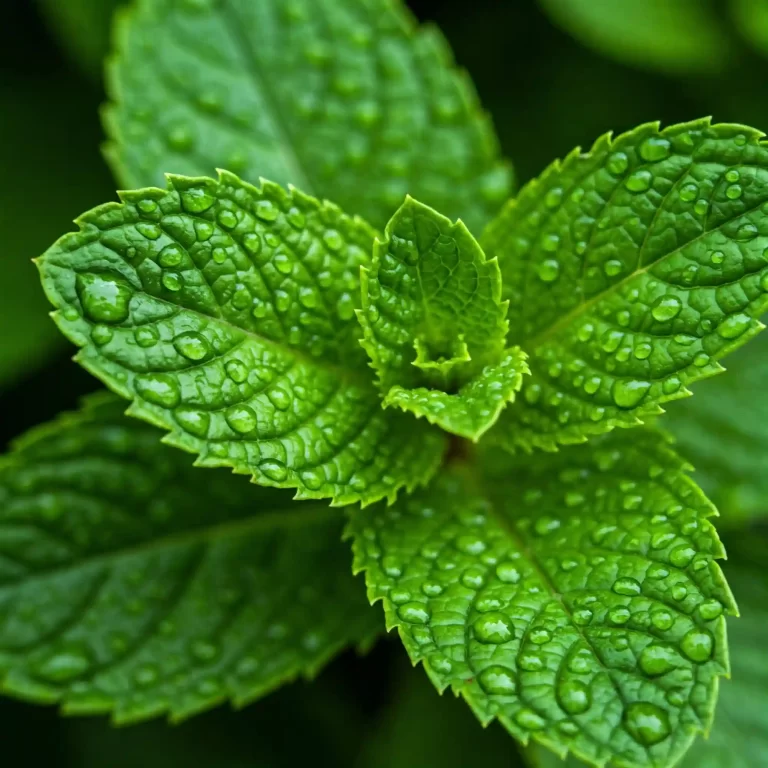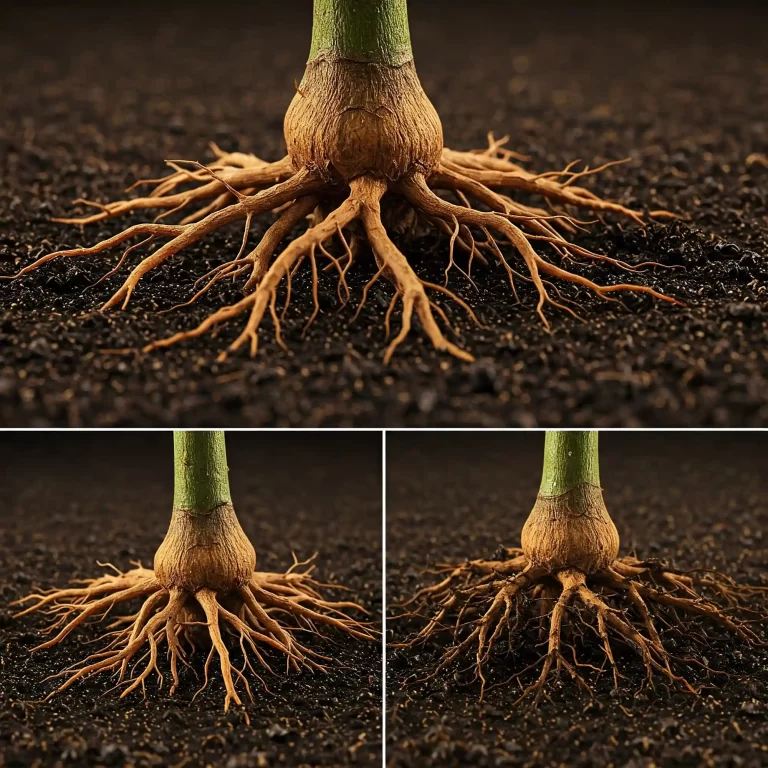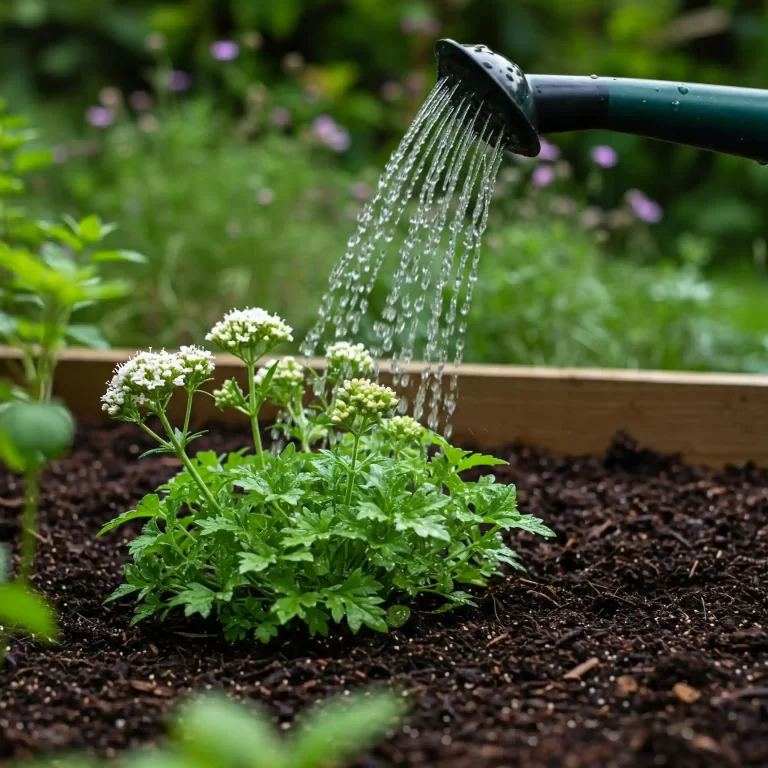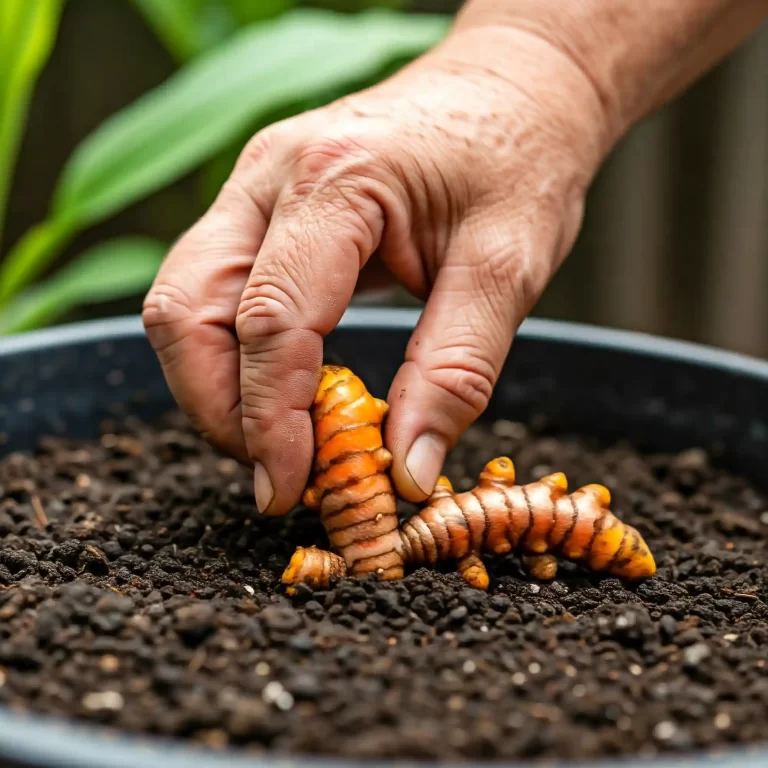Are you tired of relying on store-bought licorice root, unsure of its quality and origin? Do you dream of harvesting your own fresh licorice, knowing exactly how it was grown and cared for? I understand the desire for fresh, homegrown ingredients, and I’ve been there myself. Many gardeners find the idea of growing licorice root intimidating, picturing complex processes and specialized knowledge. But I’m here to tell you it’s much simpler than you might think. Growing licorice root at home is not only achievable but also incredibly rewarding. This guide offers a simple, step-by-step approach, empowering you to cultivate this unique herb in your own garden, regardless of your experience level.
How to Grow Licorice Root Herbs: A Complete Guide
Growing your own licorice root can be a rewarding experience, providing you with a natural sweetener and a valuable medicinal herb right from your garden. This comprehensive guide will walk you through everything you need to know about how to grow licorice root herbs, from planting to harvesting. Whether you’re a seasoned gardener or just starting out, you’ll find helpful tips and techniques to cultivate this fascinating plant successfully.
Understanding Licorice Root Herbs
Licorice, scientifically known as Glycyrrhiza glabra, is a perennial herb belonging to the legume family. It’s native to parts of Europe and Asia, where it has been cultivated for centuries for its unique flavor and medicinal properties. You might primarily know it for its distinctive sweet taste, often associated with confectionery, but the root of the licorice plant has a rich history that extends far beyond candy.
History and Origins of Licorice:
The use of licorice can be traced back to ancient civilizations. The Egyptians, for instance, used licorice root to make a sweet drink called “mai-sus,” and it was also found in the tomb of King Tut. In traditional Chinese medicine, licorice is one of the 50 fundamental herbs, valued for its harmonizing properties. The Romans also recognized its medicinal uses, with Pliny the Elder recommending it for coughs and other ailments. This rich history underscores the long-standing relationship between humans and this versatile plant.
Uses and Benefits of Licorice Root:
Licorice root is prized for its diverse applications, both culinary and medicinal.
- Culinary Uses: The most well-known use of licorice is as a flavoring agent in candies, beverages, and desserts. Its characteristic sweetness comes from a compound called glycyrrhizin, which is significantly sweeter than sugar. I sometimes add a small piece of dried licorice root to my herbal tea blends for a touch of natural sweetness.
- Medicinal Benefits: Licorice root has been used in traditional medicine for various purposes. Some studies suggest it may have anti-inflammatory, antioxidant, and antiviral properties. It’s often used to soothe sore throats, aid digestion, and support adrenal function. However, it’s important to note that consuming large amounts of licorice can have side effects, such as raising blood pressure, so it’s always best to consult with a healthcare professional before using it medicinally, especially if you have pre-existing health conditions.
Licorice Root Growing Zones and Climate Requirements:
Licorice thrives in specific climate conditions. It prefers full sun and well-drained soil. It’s hardy in USDA hardiness zones 7-10, meaning it can tolerate winter temperatures down to 0°F (-18°C). If you live in a colder climate, you can still grow licorice in containers and bring them indoors during the winter months. I’ve found that providing a sunny location mimicking its native Mediterranean climate is key for healthy growth.
Key Characteristics of Licorice Root:
| Characteristic | Description |
| Botanical Name | Glycyrrhiza glabra |
| Plant Type | Herbaceous perennial |
| Hardiness Zones | 7-10 (can be grown in colder zones with protection) |
| Sunlight | Full sun (at least 6-8 hours per day) |
| Soil | Well-drained, fertile soil with a slightly acidic to neutral pH (6.0-7.0) |
| Mature Height | 3-5 feet (0.9-1.5 meters) |
| Spread | Spreads via rhizomes |
| Bloom Time | Summer (produces pea-like flowers) |
| Root System | Extensive rhizomatous root system |
| Propagation Methods | Seeds, rhizome cuttings |
| Uses | Culinary, medicinal, ornamental |
This background information is vital for understanding the needs of your licorice plants and setting them up for success. Knowing where licorice comes from and how it’s traditionally used helps you appreciate its unique qualities and gives you a greater connection to your garden.
How to Plant Licorice Root Herbs
Now that you understand the basics of licorice root, let’s dive into the practical steps of planting. You have two primary options: starting from seeds or using rhizome cuttings. Both methods have their advantages and disadvantages, and I’ll walk you through each one.
Starting from Seed vs. Rhizome Cuttings:
- Seeds: Starting from seed can be a rewarding experience, allowing you to witness the entire life cycle of the plant. However, licorice seeds can be slow and challenging to germinate. It often takes several weeks, and not all seeds will sprout. This method requires more patience and attention to detail.
- Rhizome Cuttings: This is the method I prefer and recommend for most gardeners. Rhizomes are the horizontal underground stems of the licorice plant. By planting a section of rhizome, you’re essentially cloning the parent plant, ensuring you get a plant with the desired characteristics. This method is faster and more reliable than starting from seed.
When to Plant Licorice:
The best time to plant licorice is in the spring, after the last frost has passed and the soil has warmed up. This gives the plants plenty of time to establish their root systems before the winter. If you’re starting from seeds, you can begin the process indoors a few weeks before the last frost.
Preparing the Soil:
Licorice thrives in well-drained, fertile soil with a slightly acidic to neutral pH (6.0-7.0). Before planting, I always amend the soil with plenty of organic matter, such as compost or well-rotted manure. This improves drainage, provides essential nutrients, and helps retain moisture. You can test your soil’s pH using a simple home test kit, available at most garden centers.
How to Plant Licorice Rhizomes or Seeds:
- Rhizomes: Dig a trench about 4-6 inches deep. Place the rhizome cuttings horizontally in the trench, spacing them about 18-24 inches apart. Cover the rhizomes with soil and gently firm the soil around them. Water thoroughly after planting.
- Seeds: Sow the seeds about ¼ inch deep in well-prepared soil. Keep the soil moist but not waterlogged. Once the seedlings have developed a few sets of true leaves, you can transplant them outdoors, spacing them similarly to rhizome cuttings.
Growing Licorice in Containers:
If you have limited garden space or live in a colder climate, you can successfully grow licorice in containers. Choose a pot that is at least 12 inches deep and wide to accommodate the plant’s extensive root system. Use a high-quality potting mix that drains well. Place the container in a sunny location that receives at least 6-8 hours of sunlight per day.
By following these planting guidelines, you’ll give your licorice plants a strong start and set them up for healthy growth and abundant harvests in the future. Remember, proper preparation is key to success in any gardening endeavor.
Caring for Your Licorice Root Plants
Once your licorice plants are in the ground or in their containers, consistent care is essential for healthy growth and a bountiful harvest. Here’s what you need to focus on:
Watering Requirements:
Licorice prefers consistent moisture, especially during its active growing season. I usually water my plants deeply once or twice a week, depending on the weather conditions. You want the soil to be consistently moist but not waterlogged. Overwatering can lead to root rot, a serious problem for licorice. A good way to check if your plants need water is to stick your finger about an inch into the soil. If it feels dry, it’s time to water.
Sunlight Needs:
Licorice thrives in full sun, meaning it needs at least 6-8 hours of direct sunlight per day. If you live in a particularly hot climate, some afternoon shade can be beneficial to prevent the plants from getting scorched. When growing licorice indoors, a sunny windowsill or grow lights are essential.
Fertilizing Licorice:
While licorice isn’t a heavy feeder, providing it with some extra nutrients can boost its growth. I like to use a balanced organic fertilizer, such as compost tea or well-rotted manure, a couple of times during the growing season. Avoid over-fertilizing, as this can lead to excessive foliage growth at the expense of root development.
Weed Control and Mulching:
Weeds can compete with your licorice plants for water and nutrients, so it’s important to keep them at bay. Regular hand-weeding is usually sufficient. Applying a layer of organic mulch around your plants can help suppress weeds, retain moisture, and regulate soil temperature.
Protecting Licorice From Pests and Diseases:
Licorice is relatively pest and disease-free, but there are a few issues to watch out for:
- Pests: Aphids and mites can occasionally infest licorice plants. You can usually control these with a strong spray of water or by using insecticidal soap.
- Diseases: Root rot is the most common disease affecting licorice, usually caused by overwatering or poorly drained soil. To prevent this, ensure your plants are in well-draining soil and avoid overwatering.
How to Grow Healthy Licorice Root Herbs With Companion Planting
Companion planting can be a valuable tool for growing healthy licorice. By planting certain species nearby, you can enhance growth, deter pests, and improve soil health. Some good companion plants for licorice include:
- Marigolds: These flowers repel nematodes, which can be a problem for licorice roots.
- Yarrow: This herb attracts beneficial insects that prey on aphids and other pests.
- Comfrey: This dynamic accumulator plant can be used to make a nutrient-rich fertilizer for your licorice.
By following these care tips, you’ll be well on your way to growing healthy, productive licorice plants. Remember, consistent attention and a little bit of effort can make a big difference in your gardening success.
Harvesting and Drying Licorice Root Herbs
After patiently nurturing your licorice plants, the time will come to reap the rewards of your labor. Harvesting and drying licorice root is a relatively simple process, but it’s important to do it correctly to preserve the root’s flavor and medicinal properties. Here’s what you need to know:
When to Harvest Licorice Root:
Licorice root is typically harvested in the fall, after the plant’s foliage has died back. This is when the roots are at their peak concentration of glycyrrhizin, the compound responsible for licorice’s sweetness. I usually wait until the second or third year after planting to harvest my licorice, as this gives the roots ample time to mature.
How to Dig Up Licorice Roots:
Digging up licorice roots can be a bit of a workout, as the plants have extensive root systems. I recommend using a garden fork to loosen the soil around the base of the plant before carefully lifting the roots out of the ground. Be gentle to avoid damaging the roots.
Cleaning and Preparing the Harvested Roots:
Once you’ve dug up the roots, remove any excess soil by gently shaking them or using a soft brush. Then, wash the roots thoroughly with water to remove any remaining dirt.
Drying Methods:
To dry licorice root, you can use one of two methods:
- Air Drying: This is the traditional method and the one I prefer. Cut the cleaned roots into smaller pieces, about 6-8 inches long. Spread the pieces out on a clean, dry surface in a well-ventilated area. Allow the roots to air dry for several weeks, turning them occasionally to ensure even drying.
- Dehydrator: If you have a food dehydrator, you can use it to dry licorice root more quickly. Follow the manufacturer’s instructions for drying herbs.
Storing Dried Licorice Root:
Once the licorice root is completely dry, store it in an airtight container in a cool, dark place. Properly dried licorice root can last for several years.
By following these harvesting and drying tips, you can ensure you have a supply of high-quality licorice root to use for culinary or medicinal purposes. It’s a satisfying feeling to know you’ve grown and processed this valuable herb yourself.
Troubleshooting Common Licorice Growing Problems
Even with the best care, you might encounter some challenges while growing licorice. I’ve certainly had my share of learning experiences! Here are some common problems and how to address them:
Slow Growth:
If your licorice plants seem to be growing slowly, there could be several reasons:
- Insufficient Sunlight: Licorice needs plenty of sunlight to thrive. Ensure your plants are getting at least 6-8 hours of direct sunlight per day.
- Poor Soil: Licorice prefers well-drained, fertile soil. If your soil is heavy clay or sandy, amend it with organic matter to improve drainage and nutrient retention.
- Lack of Nutrients: While licorice isn’t a heavy feeder, it still needs some nutrients to grow. Consider applying a balanced organic fertilizer.
- Competition from Weeds: Weeds can steal valuable resources from your licorice plants. Keep the area around your plants free of weeds.
Yellowing Leaves:
Yellowing leaves can be a sign of several issues:
- Overwatering: Overwatering can lead to root rot, which can cause the leaves to yellow. Ensure your plants are in well-draining soil and avoid overwatering.
- Nutrient Deficiency: A lack of essential nutrients, such as nitrogen or iron, can also cause yellowing leaves. Applying a balanced organic fertilizer can help correct this.
- Pests or Diseases: Certain pests and diseases can also cause yellowing leaves. Inspect your plants for any signs of infestation or disease.
Root Rot:
Root rot is a serious problem that can kill your licorice plants. It’s usually caused by overwatering or poorly drained soil. The symptoms of root rot include yellowing leaves, wilting, and a foul odor coming from the soil. To prevent root rot:
- Ensure Well-Draining Soil: Amend heavy clay soil with organic matter to improve drainage.
- Avoid Overwatering: Water deeply but infrequently, allowing the soil to dry out slightly between waterings.
- Plant in a Suitable Location: Choose a location with good drainage and plenty of sunlight.
Pest Infestations:
Licorice is relatively pest-free, but aphids and mites can occasionally be a problem. These pests can suck the sap from the leaves, causing them to yellow and wilt. To control these pests:
- Strong Spray of Water: A strong spray of water from a garden hose can dislodge many pests.
- Insecticidal Soap: Insecticidal soap is an effective organic treatment for aphids and mites.
Fungal Diseases:
Fungal diseases can sometimes affect licorice, especially in humid conditions. To prevent fungal diseases:
- Provide Good Air Circulation: Ensure your plants have good air circulation by spacing them adequately.
- Avoid Overhead Watering: Water at the base of the plants to avoid wetting the foliage.
- Use Fungicides: If fungal diseases become a problem, you can use organic fungicides to control them.
By being aware of these potential problems and taking preventative measures, you can keep your licorice plants healthy and thriving. Remember, early detection is key to addressing any issues effectively.
How to Grow Licorice Root Herbs in Containers at Home
Growing licorice root herbs in containers at home is a great option if you have limited garden space or live in a climate that isn’t ideal for growing licorice outdoors. Here are some tips for successfully growing licorice in containers:
Choosing the Right Container
Select a container that is at least 12 inches deep and wide to accommodate the licorice plant’s long taproot. Ensure the container has drainage holes to prevent water from accumulating at the bottom, which can lead to root rot.
Best Potting Mix for Container-Grown Licorice
Use a well-draining potting mix that is rich in organic matter. You can amend a general-purpose potting mix with compost or aged manure to improve its fertility.
Watering and Fertilizing Container Licorice
Water your container-grown licorice regularly, especially during hot, dry weather. Allow the top inch of soil to dry out between waterings to prevent overwatering. Fertilize your licorice plants with a balanced liquid fertilizer diluted to half strength every two weeks during the growing season.
Overwintering Container Licorice
In colder climates, you’ll need to overwinter your container-grown licorice indoors. Before the first frost, cut back the foliage to a few inches above the soil line. Move the container to a cool, dark location, such as an unheated garage or basement. Water sparingly during the winter months, just enough to keep the soil from drying out completely. In the spring, once the danger of frost has passed, gradually acclimate your licorice plants to outdoor conditions before moving them back to their sunny location.
Best Organic Fertilizer for Growing Healthy Licorice Root Herbs
Organic fertilizers can significantly enhance the growth and health of your licorice root herbs, providing them with the essential nutrients they need to thrive. Here are some of the best organic fertilizer options for licorice:
- Compost: Compost is a rich source of organic matter and essential nutrients. It improves soil structure, drainage, and water retention. I like to mix compost into the soil before planting and then top-dress around the plants during the growing season.
- Aged Manure: Aged manure is another excellent organic fertilizer that provides a slow-release source of nutrients. Be sure to use well-rotted manure, as fresh manure can burn plant roots. I usually mix aged manure into the soil before planting or side-dress around established plants.
- Bone Meal: Bone meal is a good source of phosphorus, which is essential for root development. I often use bone meal when planting licorice to encourage strong root growth.
- Rock Phosphate: Rock phosphate is another source of phosphorus that is released slowly over time. I usually mix rock phosphate into the soil before planting.
- Kelp Meal: Kelp meal is a rich source of micronutrients and trace minerals. It can improve plant health and vigor. I sometimes use kelp meal as a soil amendment or foliar spray.
How to Apply Organic Fertilizers to Licorice:
- Compost and Aged Manure: Mix into the soil before planting or side-dress around established plants.
- Bone Meal and Rock Phosphate: Mix into the soil before planting.
- Kelp Meal: Mix into the soil or use as a foliar spray.
When using organic fertilizers, it’s essential to follow the package instructions and avoid over-fertilizing, which can harm your plants. I’ve found that a balanced approach, using a combination of different organic fertilizers, can provide the best results for growing healthy licorice root herbs.
How to Improve Licorice Root Herbs Growth with Companion Planting
Companion Planting for Licorice Root Herbs: A Natural Approach to Growth and Pest Control
Companion planting, the practice of growing different plant species together for mutual benefit, can be a valuable tool for enhancing the growth and health of your licorice root herbs. By selecting compatible companions, you can create a synergistic environment that promotes vigorous growth, deters pests, and improves soil health.
Beneficial Companions for Licorice Root Herbs
- Marigolds: These vibrant flowers are known for their pest-repelling properties, particularly against nematodes, microscopic worms that can damage licorice roots. Marigolds also attract beneficial insects, such as ladybugs and hoverflies, which prey on aphids and other garden pests.
- Yarrow: This herb attracts beneficial insects, such as ladybugs, hoverflies, and lacewings, which help control aphids, mites, and other soft-bodied pests that may bother licorice. Yarrow also improves soil health by attracting beneficial microbes and improving nutrient availability.
- Comfrey: This dynamic accumulator plant is known for its ability to draw nutrients from the soil and store them in its leaves. When comfrey leaves decompose, they release these nutrients back into the soil, enriching it for licorice and other plants. Comfrey also attracts pollinators and beneficial insects.
- Other Companions: Other beneficial companion plants for licorice include chamomile, dill, fennel, and parsley. These herbs attract beneficial insects, improve soil health, and enhance the flavor and aroma of licorice.
Plants to Avoid Planting Near Licorice
- Mint: Mint can be invasive and compete with licorice for resources. It can also attract spider mites, which can be a problem for licorice.
- Brassicas: Plants in the brassica family, such as cabbage, broccoli, and cauliflower, can stunt the growth of licorice. They also attract cabbage white butterflies, whose caterpillars can feed on licorice leaves.
Benefits of Companion Planting for Licorice
- Enhanced Growth: Companion planting can improve the growth and vigor of licorice by providing shade, support, or nutrients.
- Pest and Disease Control: Companion plants can repel pests, attract beneficial insects, or improve soil health, reducing the risk of pest and disease problems in licorice.
- Improved Soil Health: Companion plants can improve soil structure, drainage, and nutrient availability, creating a more favorable environment for licorice growth.
- Increased Biodiversity: Companion planting can increase the biodiversity of your garden, attracting a wider range of beneficial insects, pollinators, and other wildlife.
By incorporating companion planting into your licorice-growing practices, you can create a thriving ecosystem that supports the health and productivity of your licorice root herbs.
How to Grow Licorice Root Herbs for Making Homemade Licorice Tea
Brewing Your Own Soothing Elixir
Growing licorice root herbs opens up a world of possibilities, not just for culinary uses but also for creating your own soothing and healthful licorice tea. Here’s a guide to transforming your homegrown licorice root into a comforting beverage:
Preparing Licorice Root for Tea
- Harvesting: As discussed earlier, harvest licorice roots in the fall after the plant’s foliage has died back. This is when the roots are at their peak concentration of beneficial compounds.
- Cleaning: Thoroughly wash the harvested roots to remove any dirt or debris.
- Drying: Dry the roots completely using one of the methods described earlier—air drying or a dehydrator.
- Cutting: Once dried, cut the licorice root into small pieces about 1-2 inches long. This increases the surface area and allows for better extraction of flavor and beneficial compounds.
Brewing Licorice Root Tea
- Steeping: Place about 1-2 teaspoons of dried licorice root pieces in a cup or mug. Pour 8 ounces of boiling water over the roots.
- Steep Time: Cover the cup and let the tea steep for 10-15 minutes to allow the flavors and beneficial compounds to infuse into the water.
- Straining: Strain the tea through a fine-mesh sieve or cheesecloth to remove the licorice root pieces.
- Serving: Enjoy your homemade licorice tea warm. You can add a touch of honey or lemon to enhance the flavor if desired.
Benefits of Licorice Root Tea
Licorice root tea has been traditionally used for its potential health benefits, including:
- Soothing Sore Throats: Licorice may help soothe irritated throat tissues and relieve coughs.
- Aiding Digestion: Licorice may help ease digestive discomfort, such as heartburn and indigestion.
- Supporting Adrenal Function: Licorice may help support healthy adrenal function, which can be beneficial for stress management.
Important Considerations:
- Moderation: It’s important to consume licorice root tea in moderation, as excessive intake can lead to side effects such as increased blood pressure.
- Consult a Healthcare Professional: If you have any underlying health conditions or are taking medications, consult with your healthcare professional before consuming licorice root tea regularly.
By following these simple steps, you can enjoy the delightful flavor and potential health benefits of homemade licorice tea, all from the comfort of your garden.
FAQ: Addressing Your Licorice Growing Questions
This section addresses some frequently asked questions about growing licorice root herbs, drawing from the data we identified earlier. I’ve compiled these based on common inquiries I’ve received from fellow gardeners over the years.
How long does it take to grow licorice root herbs from seed?
Growing licorice from seed requires patience. Germination can take anywhere from 2-4 weeks, and sometimes even longer. Once the seedlings emerge, they grow relatively slowly during their first year. It usually takes 2-3 years for licorice plants grown from seed to reach maturity and produce a harvestable root system. Several factors can influence the growth rate, including:
- Seed Quality: Fresh, high-quality seeds tend to germinate more readily.
- Temperature: Warm soil temperatures (around 70-75°F or 21-24°C) are ideal for germination.
- Moisture: Consistent moisture is essential, but avoid overwatering, which can lead to seed rot.
How to care for licorice root herbs during the winter months?
Licorice is a hardy perennial in zones 7-10, meaning it can tolerate winter temperatures down to 0°F (-18°C). However, in colder climates, some winter protection is necessary. Here’s what I recommend:
- Mulching: Apply a thick layer of organic mulch, such as straw or wood chips, around the base of the plants to insulate the roots and protect them from freezing temperatures.
- Cutting Back Foliage: After the first frost, cut back the foliage to a few inches above the ground.
- Container Plants: If you’re growing licorice in containers, move them to a cool, dark location, such as an unheated garage or basement. Water sparingly during the winter months, just enough to prevent the soil from drying out completely.
How to harvest and dry licorice root herbs for medicinal use?
Harvesting licorice root for medicinal use is the same as harvesting for any other purpose. The key is the drying process to preserve the medicinal compounds.
- Harvesting: Harvest in the fall after the foliage dies back, ideally in the second or third year after planting.
- Cleaning: Wash the roots thoroughly to remove any dirt.
- Drying: Cut the roots into smaller pieces and dry them completely using air drying or a dehydrator.
- Storage: Store the dried roots in an airtight container in a cool, dark place.
Where to buy licorice root herbs for planting in my garden?
You can purchase licorice root rhizomes or seeds from several sources:
- Local Nurseries: Check with your local nurseries or garden centers. They may carry licorice plants or rhizomes, especially if they specialize in herbs or medicinal plants.
- Online Seed and Plant Suppliers: Many reputable online suppliers offer licorice seeds and rhizomes. Be sure to choose a supplier that specializes in herbs and has good reviews.
- Herbal Suppliers: Some herbal suppliers also sell licorice root for planting.
How to grow licorice root herbs in zone 7 for best results?
Zone 7 is within licorice’s hardiness range, so you can successfully grow it outdoors. Here are some tips for zone 7 gardeners:
- Plant in a Sunny Location: Choose a location that receives at least 6-8 hours of direct sunlight per day.
- Ensure Well-Drained Soil: Amend heavy clay soil with organic matter to improve drainage.
- Provide Winter Protection: Although licorice is hardy in zone 7, a layer of mulch can help protect the roots during harsh winters.
What is the best soil for growing licorice root herbs?
Licorice prefers well-drained, fertile soil with a slightly acidic to neutral pH (6.0-7.0). Here’s what I recommend:
- Soil Type: A sandy loam or loamy soil is ideal.
- Drainage: Good drainage is crucial to prevent root rot.
- Organic Matter: Amend the soil with plenty of compost or aged manure to improve fertility and drainage.
How to prevent common diseases in growing licorice root herbs?
The most common disease affecting licorice is root rot, caused by overwatering or poorly drained soil. To prevent root rot:
- Ensure Well-Draining Soil: Amend heavy clay soil with organic matter.
- Avoid Overwatering: Water deeply but infrequently.
- Provide Good Air Circulation: Space plants adequately to allow for good air circulation.
By addressing these common questions, I hope to provide you with the confidence and knowledge you need to successfully grow licorice root herbs in your garden. If you have any further questions, don’t hesitate to reach out!
Conclusion: Cultivating Your Own Sweet Success with Licorice Root Herbs
Growing licorice root herbs is a truly rewarding endeavor for any gardener, whether you’re a seasoned pro or just beginning your green-thumb journey. From understanding its rich history and diverse uses to navigating the nuances of planting, caring for, harvesting, and even troubleshooting potential problems, you now possess the knowledge to cultivate this fascinating herb successfully.
I remember my first attempt at growing licorice. I was so eager to have my own supply of this unique herb, but I made a few mistakes along the way. I overwatered my plants, which led to some initial root rot issues. But through careful observation, research, and a bit of trial and error, I learned how to provide the optimal conditions for these plants to thrive. And you can too.
Think about the satisfaction of harvesting your own licorice root, knowing exactly where it came from and how it was grown. Imagine brewing a cup of homemade licorice tea, enjoying its soothing properties and unique flavor, all thanks to your own gardening efforts. Growing licorice root not only provides you with a valuable resource but also connects you to a long history of human interaction with this versatile plant.
By following the guidelines outlined in this comprehensive guide, you can confidently embark on your own licorice-growing adventure. Remember, patience is key, especially when starting from seeds. But with consistent care and attention, you’ll be rewarded with a thriving licorice patch that provides you with a natural sweetener, a medicinal herb, and a deeper connection to the natural world.
I encourage you to embrace the process, learn from your experiences, and enjoy the fruits (or rather, roots) of your labor. Happy growing!
